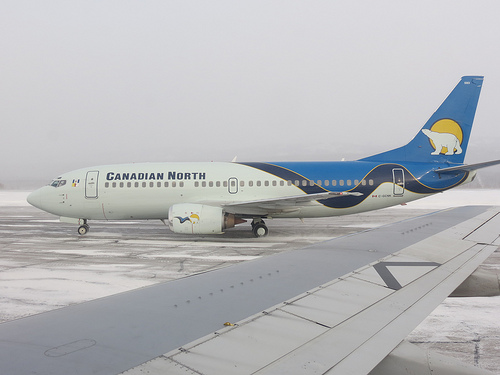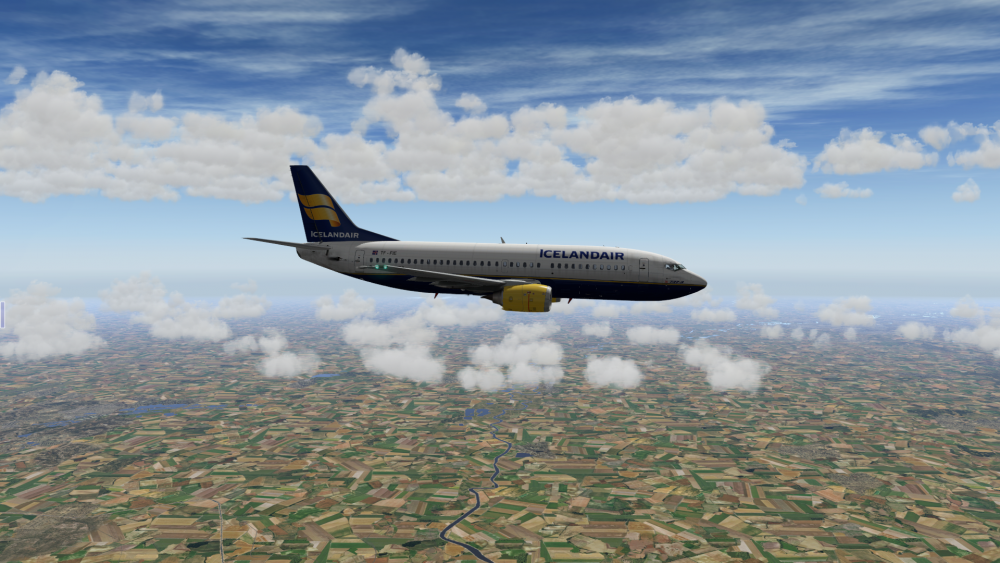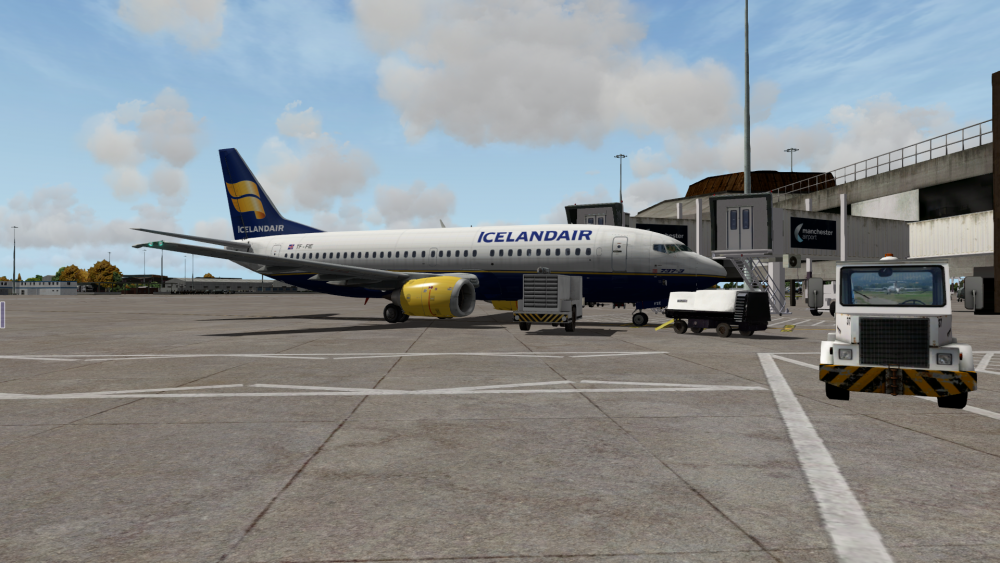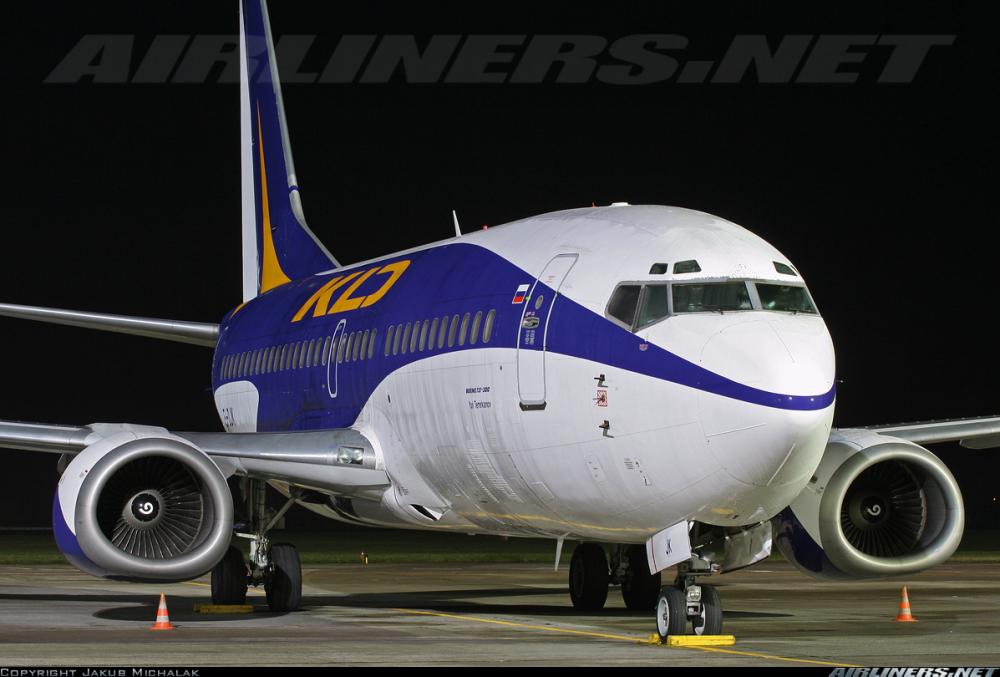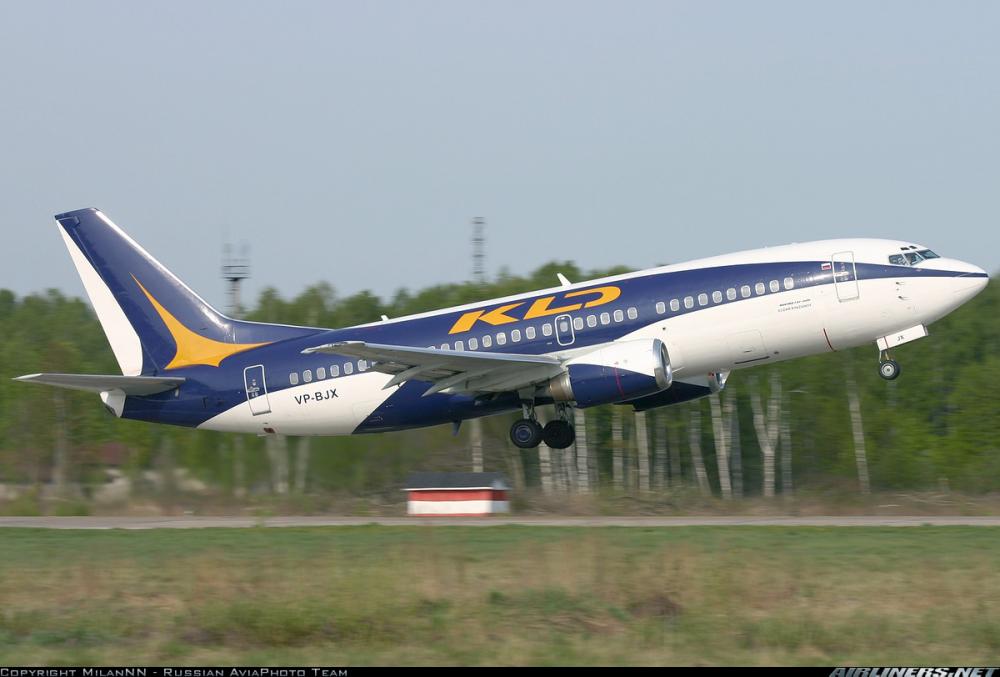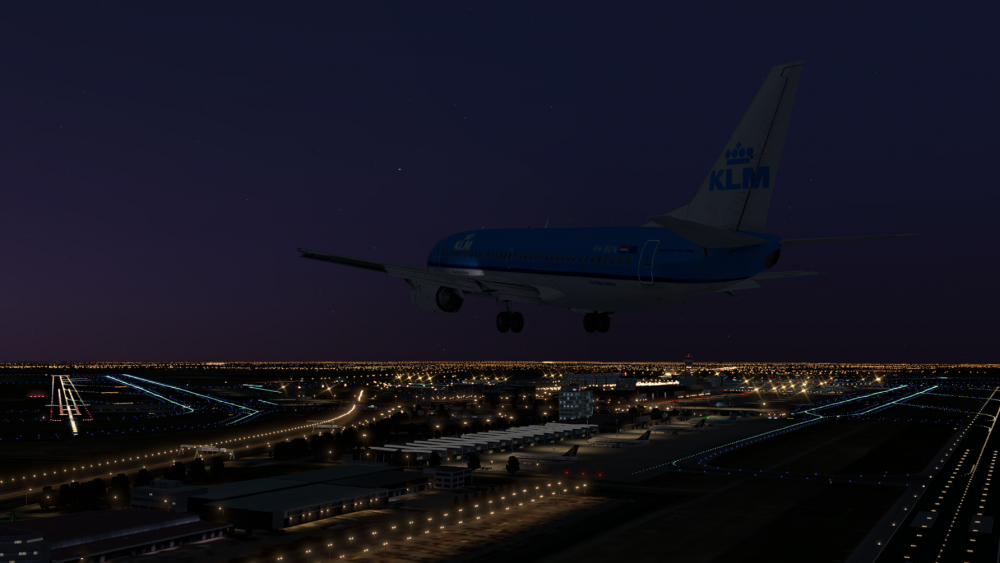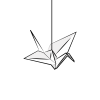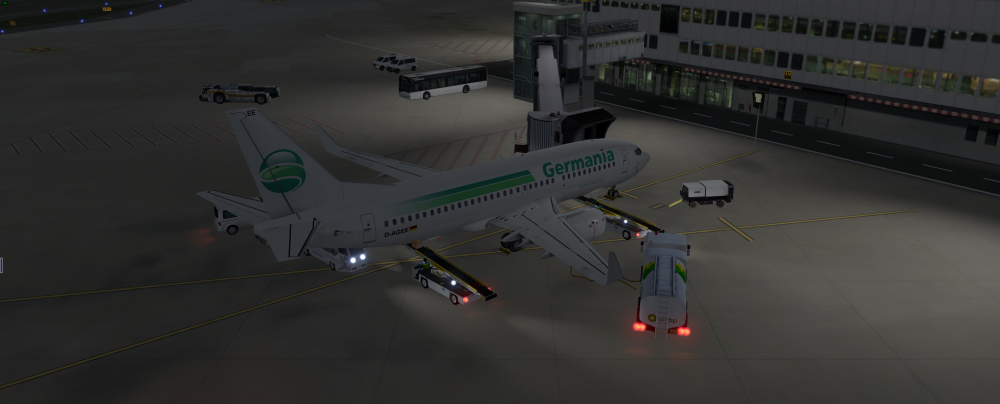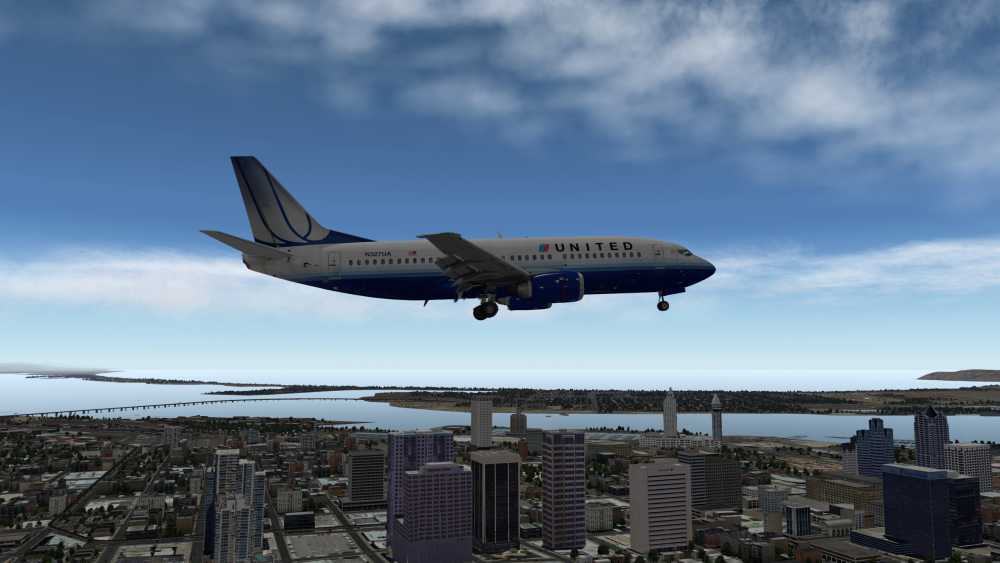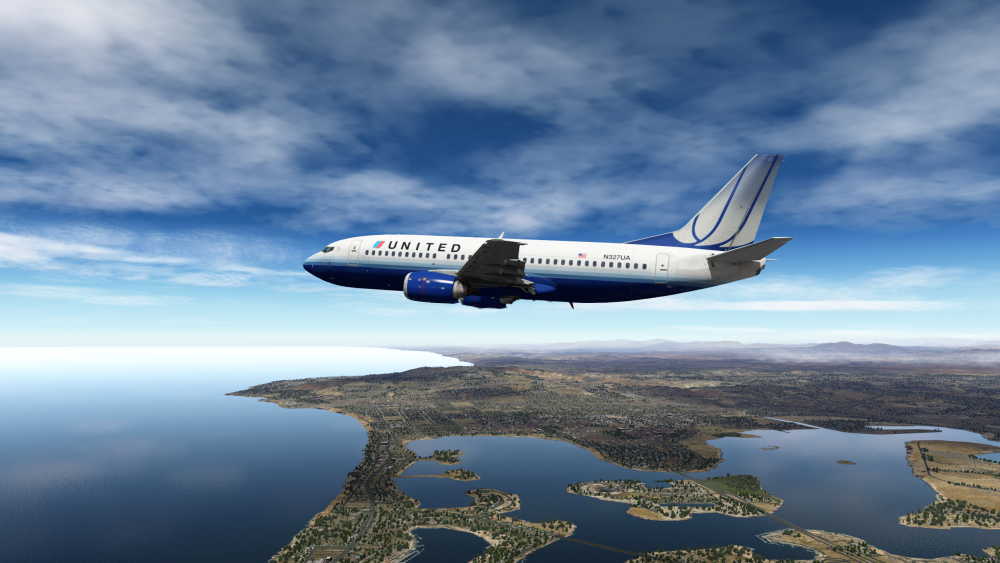Leaderboard
Popular Content
Showing content with the highest reputation on 05/09/2016 in all areas
-
6 points
-
5 points
-
Hello, I created this checklist that might be helpful to others too. You can grab it here : http://forums.x-plane.org/index.php?/files/file/32937-ixeg-boeing-737-300-custom-checklist-pdf-png/ PS: Let me know if there's something silly in the checklist and I will fix that Version 1.2 released: Many additional checks and limits added, still packed in a compact format.4 points
-
4 points
-
Taking a short break from heavy metal (read: IXEG) Linz, Austria [LOWL] to Portoroz, Slovenia [LJPZ]4 points
-
2 points
-
2 points
-
Interestingly, it seems to have been modelled differently at some point in time:2 points
-
Just turning the switch on will not radiate - only when the WXR pushbutton is used, will the weather radar start transmitting... Jan2 points
-
Arriving at Girona, Spain [LEGE] Descent and landing at Tel Aviv, Israel [LLBG] My longest non-stop IXEG flight so far, 3 hours 52 minutes!2 points
-
2 points
-
2 points
-
As many of you know there are plenty of things to remember and many of ways to operate in the real world. I will pass on some of the tips I use real world that should help in the sim world also. One of the biggest concerns when flying passengers is passenger comfort. It's even more important in the corporate world that I operate in. From time to time I find myself riding as a passenger when attending recurrent sims and when picking up/dropping off aircraft. One of the most noticeable things when riding as a passenger is sudden or aggressive pitch changes. This happens for various reasons, but here are some tips to minimize the occurrences. When initiating climbs, it's a good idea to start in vertical speed. Select vert speed and smoothly dial it up until the engines reach max power. Once there, select FLCH and the passengers will not notice at all. If you select FLCH first, the engines will surge forward, and then the nose will pitch quickly to maintain the current speed. The Gulfstreams I fly have the ability to decide the amount of thrust to use based on altitude changes 6,000ft or less, but it still can get aggressive. Some guys like to set 200 to 300 feet per minute in the first few seconds and last few seconds of the altitude change. I prefer a smooth increase instead of wasting free brain cells milking the vert wheel. In the real world, FLCH gets pitchy after mach change over, but no worries in the sim. When using FLCH when climbing above change over, I watch it like a hawk. As soon as the plane starts a move, I hit the vert speed button to lock it in. Once the airspeed settles/recovers, I max out the engines and re-engage FLCH. This happens because of temperature inversions and wind changes as you climb. This can easily cause a instantaneous change on the speed indicator causing the plane to quickly pitch to adjust. If you are paying attention, you will see the speed change and hit vert speed before it pitches. When the jet is heavy, it lags a little and makes FLCH less pitchy. Another good tip is to use vert speed when light weight if you are clear of obstacles. 2000fpm works well. This technique slows things down and makes the jet more manageable. If you are climbing at 4000 to 5000fpm, the jet will make an aggressive zero g maneuver at level off. It's much easier to use vert speed in this case. When I would return back to base after training missions back when I flew KC-10s, we would do about an hour of transition and pattern work. We would get back at about 380,000 pounds compared to the max 590,000 pounds. Newbies would perform an autopilot go around up to 2000ft. At 380K and 3 engines churning out 52,500 pounds of thrust each, 2000ft comes very fast. The look on their faces when the plane would aggressively pitch to capture and every now and then blow past the altitude, was priceless. I taught them that after you hit TOGA and the plane gets going, you needed to quickly vert speed and back it off. If you hit vert speed too late, you would ruin the capture mode and blow past the altitude for sure. Those were some fun times. Another good tip is speed brake use. I hear plenty sim experts shade people for speed brake use and I think it's rubbish. They were put on the plane for a reason. I also spend a lot of time operating on the NE coast of the USA and we get slam dunked into airports all the time. They keep you up longer and only step you down a few thousand feet at a time. There isn't a descend VIA, it's only constant crossing restrictions on the way down. I hardly ever get to use VNAV on descents. What you find is that you have to use speed brakes and use them early! Even in the real world i see people get so far behind and rushed because they were taught not to use the brakes. It's quite common to ride the brakes on the river visual to 19 at KDCA. There are two tricks to speed brake use. 1. The earlier you use them, the less amount you will need. SA is everything. 2. Speed brake use is like slipping out and back into bed with your significant other sleeping. You ease them out nice and slowly. Once you are done, you ease them in slowly. In some cases, you have to ride the brakes until you are ready to trade them for flaps. You work in flaps, and then ease in the brakes. I'm sure if you could descend when ever you want, you wouldn't need them, but welcome to the real world. When operating in areas with close multiple airports with departure and arrival corridors, it gets interesting. I like the 3 or 4 times your altitude to lose technique. So if i have 10,000ft to lose to be at 2000ft 10 miles from the airport: 3 X 10 = start descent by 30 miles from the field. 4 times your altitude to lose works well also because it gives you more time to slow prior to 10,000ft. If you are at or past this point and have yet to descend, you will need some brakes. Guys will say that the brakes are loud and rumble, I guess they have never sat aft of the wings on an airliner. For slowing, I like 12 at 12 or 13 at 13. Basically set 1300 fpm at 13,000ft to reach 250kts by 10,000ft. This has worked very well in all the jets I've flown. In most jets, you can only get 1500fpm and maintain 250kts clean. Any higher rate, and you will accelerate. Just in case you didn't catch my 737 techniques in another post, I'll post them again. Keep in mind that these are more aimed at the BBJ, but should work. Aircraft References • Main Gear on your side: NESA Transmitter in lower outboard of window • Main Gear on Opposite side: Lower inboard corner of window • Outboard Side of Engine on your side: Window Handle • Outboard Side of Engine on Opposite side: Glare Shield bend • Wingtip on your side: 2.5 concrete blocks • Nose Gear: Inside of HSI Engine Start (Approximate values) • 2 -- 20% N1 • 4 -- 400 degrees EGT • 6 -- 60% N2 • 6 -- 600 pph FF Before Takeoff (LLLAASSTT Chance) • L-anding Lights (tech: nose wheel light on when cleared for takeoff) • L-adies (sit the FAs down with PA message to the back) • L-ower DU display cleared • A-utothrottle ARM (tech: when cleared for takeoff) • A-utobrakes - RTO • S-trobe lights ON • T-errain (tech: Captain Terrain/FO Weather) • T-CAS (TA/RA) 10,000’ check during climb out (FLAAPS) • F-uel Pumps (Ctr Tank management per alternate operating procedures) • L-anding Lights -- RETRACTED/OFF (consider 18,000’ in high-traffic areas) • A-irspeed -- accelerate to desired climb speed • A-PU -- Off/as desired for shorter flights/EROPS/WX • P-ressurization check (Auto/pressurizing/cabin alt OK) • S-eatbelt (double ding by going off/wait 1 sec/on then auto) Before Descent (AIRBAG) • A-TIS • I-nstall the Approach • R-adio’s -- Tune and ID • B-rief the Approach • A-pproach Checklist • G-o Around Procedures (How will the airplane fly it? HDG SEL, etc.) Planned Descent Point • Timing -- Approx. 10 seconds for every 100’ of altitude to lose • Distance -- Divide HAT by 300’. This is the distance to start descent from the end of the runway. Enroute Descent Path Planning • Build a waypoint 40 NM track distance from the landing runway with 240/10000 inserted for Speed/Altitude. - AND/OR - Use the fix page and put a 40 NM circle around the runway (or FAF) and plan to cross the circle at 240/10000 for a straight-in arrival. • When planning an enroute descent to radar vectors to final it can be difficult to determine how far out you will be vectored and how soon you should begin your descent. Request a descent at a distance that will allow a constant 1500 fpm descent. To determine this descent point: • Load the expected approach using the FMS DEP/ARR page • Load the FAF or OM point/altitude on the descent page at 3R. • You can monitor the V/S as you approach this point. When the V/S approaches 1500 request descent. Even if the descent is not granted immediately, you will have a very good target descent rate when ATC permits the descent. This technique provides a constant descent that mirrors our constant climb to cruise profile. Descent Profile • 3.5:1 (Miles : Altitude) • For every 50 Kts of wind +/- 2 Miles • Losing 10 KIAS Takes 1 NM 10,000’ check during descent (10,000’ AGL for higher field elevations) (FLAAPS) • F-uel Pumps (Ctr Tank management per alternate operating procedures) • L-anding Lights -- EXTENDED/ON (consider 18,000’ in high-traffic areas) • A-irspeed -- decelerate to 250 • A-PU -- On/as desired/WX considerations • P-ressurization -- set for landing field elevation • S-eatbelt (double ding by going on/off/wait 1 sec/on) Cat II/III ILS (ABCD) • A-PU -- On • B-rake Setting • C-at II/III ILS Procedures • A -- Approach Brief • A -- Alert/Decision height callouts • A -- Altimeter bugs (radio and barometric) • D-epart runway plan (How will you taxi to park -- SMGCS?) Before Every Approach • “AAABBCC” • A-TIS • A-pproach loaded in FMS • A-irspeed set in FMS • B-rief • B-rake setting (off, 1/2/3/Max) • C-hecklist • C-onfiguration (flap setting) • “CRAMPS” • C-ourses -- set/verify inbound course on MCP for FP & PM • R-adios -- set/verify correct frequency (ILS/VOR/Tacan/NDB) • A-ltimeters -- set/verify QNH/QFE as appropriate through transition • M-inimums -- set/verify for PF & PM • P-ush -- APP mode (or VOR/LOC or LNAV or Hdg Sel) • S-peeds -- set/verify Vref is set and displayed for flap setting Engine Failure on Takeoff • “4 Cs” (accomplished when flaps are up at min. maneuvering speed) • C-hange (Level Change) • C-ontinuous (Max Cont) • C-rossfeed (with fuel only in wing tanks) • C-hecklist (NNP then After Takeoff) Single Engine Trim • Trim into good engine is approximately equal to Fuel Flow Single Engine ILS Approach • At 1.5 Dots or later on the Glide Slope -- • Gear Down • Flaps 15 • Reduce Thrust 10% N1 Non-ILS Approach (VNAV is preferred for straight-in approaches) • 3 NM -- Configure (Gear Down/Flaps 15, Bug 15, Landing checklist to flaps) • 2 NM -- or sooner/Set Next Lower Altitude (ensure VNAV if using) • 1 NM -- Flaps 30, Bug 30, complete Landing checklist • 0.2 NM -- V/S As Desired (unless using VNAV) Touch and go/pattern work Missed Approach Note: Assumes intent for complete flap retraction to missed approach holding pattern. • TO/GA (A/P will kick off under single-channel operation) • Set Go-around thrust • Set pitch to Go-around attitude • “Flaps 15” • Positive climb rate - “Gear up” • 400’ AGL - “LNAV” or “HDG SEL” (Note: for Non-Precision approaches your probably already at/above 400’ AGL or very close if going missed from and DA/DDA/MDA) • Retract flaps on speed • 1000’ AGL - Set LVL/CHG or V/S + 1500’ • After Takeoff checklist (Ops Man) Radar Pattern Climb Out From Touch & Go • PF rotates aircraft to 15 degrees nose high • Positive climb rate - “Gear up” • Flight directors - ON (if coming from VFR Pattern OR Recycle) • 400’ AGL- “Bug Up, flaps 5, LNAV or HDG SEL ” • 1000’ AGL - Technique: "V/S, Set 1500 fpm" or "LVL CHG" • Retract flaps on schedule to “Flaps Up” • After Takeoff checklist • Maintain flaps Up for downwind Note: PF re-establishes A/P and manually arms Autothrottles • PM rechecks weather, installs approach and helps tune nav radios (technique) • PF briefs approach, tunes radios and calls for the “Approach check” Precision Approach (use “CRAMPS” check technique) • Arm APP if cleared approach on intercept heading • G/S alive - “Gear down, flaps 15, Bug 15, landing checklist to flaps" • G/S intercept - “Flaps 30/40 (final flap), Landing checklist” slow to VREF + additive Non-precision approach (non/VNAV) • Arm LNAV or use HDG SEL for lateral maneuvering • 3 miles prior - “Gear down, flaps 15, Bug 15, landing checklist to flaps” • 2 miles prior (or earlier) - Set MDA or stepdown altitude in altitude alert window • 1 mile prior - “Flaps 30/40 (final flap), complete Landing checklist” slow to Vref + additive Note: Do not arm speedbrakes or use autobrakes if accomplishing a touch & go. VFR Pattern Climb Out From Touch & Go • PF rotates aircraft to 15 degrees nose high • Positive climb - “Gear up” • Turn off FDs if not already off (technique) • 400’ AGL - “Bug 5, flaps 5” (technique) • 1000’ AGL - PF lowers nose to 10 degrees pitch and reduces thrust (at Bug 5 speed) to approximately 75% N1 (technique) • PF levels off aircraft at 1500’ AGL or pattern altitude and maintains flaps 5 on downwind VFR Pattern • Enter downwind at flaps 5, speed Vref 30 + 40 (Bug 5 speed) • VFR pattern briefing - "30/40 Flap touch and go, Speed is ____" • Approaching abeam touchdown point - “Gear down, flaps 15, bug 15 Landing checklist to flaps” slow to Bug 15 • Before turning or during turn to base - “Flaps 30/40, Bug 30/40 + ___ (additive), complete Landing checklist,” slow to Vref + additive • Descend as required (approximately 600-800 VSI as a guide) Note: Do not arm speedbrakes or use autobrakes if accomplishing a touch & go. Technique for Establishing Automation After Pattern Work Note: Technique used should be pre-briefed. Assumes the "gear up" and "flight director’s - ON " is already called/done. • 400’ AGL "Bug Up, Flaps 5; HDG SEL or LNAV" • 1000’ AGL (or A/R) "Vert Speed + 1500’, Flaps 1" or "Level Change" (Flaps 1 above F5 speed and then flaps on schedule) • PF establishes A/P by selecting CMD and A/Ts -- ARM NG techniques.pdf1 point
-
Dear IXEG, First of all, congratulations for the release of this wonderful simulation ! The job you have done is impressive and it made me going seriously on XP10. It's a real joy to fly and to see that systems interacting realistically such as landing lights wattage impacting electrical sources loads. As I am keen on flight modeling and aircraft performance and because you use your own model, I carried out several tests vs FCTM of the 737-300 to check the basic aero model. It turned out that you the model is quite close to the real thing. However I noticed 3 small gaps you could fine tune : - the wings generate too much lift: IXEG AOA are always below FCTM AOA by almost 1 deg - this discrepancy may affect induced drag as a side effect. It seems that you fine tuned drag so that descent path match at heavy weight (121 000 lbs). If you carry out a 80 000 lbs descent test, a slight gap in flight path from FL 200 start to be visible. - braking distance: I used unfactored figures at max manual braking + rev + spoiler. Landing distance are shorter than what FCTM says. I dunno if it's reverse thrust or wheel braking that is too strong. Further investigation is required there. - 1 Engine out performance is quite good as you fall into an acceptable error margin for N1. A gap start to arise at high altitude and high weight (15000 ft/135000 lbs) but this may link to lift/issue cited above. I didn't have much time to check engine model, but will do as soon as I can. Please, take it as constructive critcism. I really enjoy your bird and wih you a great success. Philippe IXEG 737-300.xlsx1 point
-
it makes the tiller act as in reality, but the yaw still have 100% control over nose wheel, I guess the only solution would be a setting in the plane when you have separate YAW/Tiller axes configured…1 point
-
1 point
-
IXEG 737 Garuda Indonesia View File C/N 28573, type 737-36N, 1st flight 05. Jun 1998. Leased 16. Jun 2003 by Garuda Indonesia (PK-GGX) from GE Capital Aviation Services (GECAS) until 01. Dec 2004. Since 25. Mar 2014 leased by Canadian North (C-FKCN), MODE S C01AAA. Still a beauty today. Check with flightradar24 if airborne : ) See also here this livery in youtube Submitter VCV Submitted 05/09/2016 Category IXEG 737 Classic Livery For Click Here For Aircraft X-Plane Version(s)1 point
-
IXEG 737-300 USAir 1980's (Allegheny Inspired) View File Hi All, This is, oddly, my favorite of the USAir, US Airways liveries, likely because I grew up flying Allegheny. Anyway, I modified scubajuan's very nice ALL bare metal to create this 1980's era USAir 737 Enjoy. If someone is patient, I could not figure out how to get the upper lines on the nose to stay level and straight. Still, we're close. Bill KGSP Submitter wcschulz3 Submitted 05/08/2016 Category IXEG 737 Classic Livery For Click Here For Aircraft X-Plane Version(s)1 point
-
Be sure that the degrees portion of the longitude contains 3 digits. In other words, if your longitude is 75 degrees, 14.5 minutes west, you would enter in as W07514.5 or if the longitude was 5 degrees, 14.5 minutes, you would enter it as W00514.5 Likewise, the latitude degrees entry needs to be two digits, with a leading zero if the current latitude is less than 10 degrees. Not sure if this is the cause of your problem, but it is one common user error that would prevent the IRS from accepting the PPOS. Although it is possible to enter your present position directly into the IRS control unit in the overhead panel, the more typical procedure would be to key it in using the FMS CDU.1 point
-
Ok so I narrowed it down to the Tugmaster plugin. With this disabled everything is good. Now I can watch wonderful replays of my terrible landings lol Will research a newer version of this Thank you for the quick reply Jan Richard1 point
-
It is not IXEG:s responsibility to add turblence to the simulator. It is the weather injector itself. If I remember it correctly, you get only turbulence if using NOAA plugin or X-Plane default weather. FSGRW does not provide turbulence.1 point
-
1 point
-
1 point
-
1 point
-
Not trying to start a flame, but asking about sales figures is not being impolite, it's just being curious. Many people, including the press and news articles, ask this to major companies such as apple.1 point
-
1 point
-
Sir, Stop being ridiculous. You actually got caught stealing/sharing your software and you already admitted to this. You tried to rub it off a bit by saying it was just someone in your family (in completely different geographical regions, I might add). When you purchase software, that software is for you. If you share it, that's piracy. End of story! We absolutely did have proof, and you acknowledged that in e-mails! You and yottaflopped did not have the same situation. I know of no others complaining but you two, and you're only complaining once caught. No, because we know you were. It's clear as day. We even told you the exact name of the person you were sharing with and you acknowledged it. There is nothing more to discuss here. Don't share products. That's the bottom line.1 point
-
Hi guys, I justed wanted to say congrats and thank you for this wonderful addon! You really did a great job! I started flying the 737 classic in FS2002 with the dreamfleet 737 (does anyone remeber? ) and since then I always hoped for a 737 calssic like yours! The atmosphere is unbelievable (the sounds, the lighting, the graphics, the symmetry of the flight deck, the....)! I'm an P3D pilot but I only bought myself Xplane, to be able to enjoy your work. And I have to say that it was the best thing I did for a long time in flight simulation! This bird is going to be heads up with PMDG and Majestic as soon as you implement all stuff you listed. And making a thread where you show all the "shortcomings" of a product is just amazing! Such honesty is really trustworthy and I'm happy to support you and your hard work with spending some money on this airplane. I wish every developer would handle things like that. You're rellay a great role model in this part. All the best, (I have to fly it now ) Julian1 point
-
1 point
-
Thank you very much for your answers guys. So the bug was sitting in front of the monitor :-)1 point
-
You most likely flicked the "light test" switch on by accident. I really wonder if there is something amiss with your computer, because the problems you are describing are pretty much not seconded by anyone else? I hope you can figure it out, Jan1 point
-
1 point
-
1 point
-
1 point
-
1 point
-
1 point
-
1 point
-
1 point
-
1 point
-
1 point
-
1 point
-
1 point
-
1 point
-
1 point
-
1 point
-
1 point
-
1 point
-
1 point
-
1 point
-
Version 1.0.1
1,502 downloads
Hey everyone, I found the stock checklist to be a little basic, so I made this expanded checklist in a style that I believe fits the aircraft. Checklist is based on real airline checklist for the 737-300. Big thanks to P3ROn for the help. (Please note that the preview image compression makes the checklist harder to read than it is in sim.) Installation instructions: 1. Go to your X-Plane 10\Aircraft\X-Aviation\IXEG 737 Classic folder 2. Make a backup of the current IXEG_checklist.png file (e.g. by renaming it to "IXEG_checklist.png.old") 3. Copy this downloaded IXEG_checklist.png to the IXEG 737 Classic folder 4. Enjoy. Please note that this checklist is not an official IXEG checklist. If you have any comments or gripes, they belong here or to me via PM. I can also be contacted at doctornerdrage@gmail.com. Safe flying!1 point



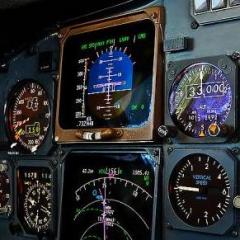



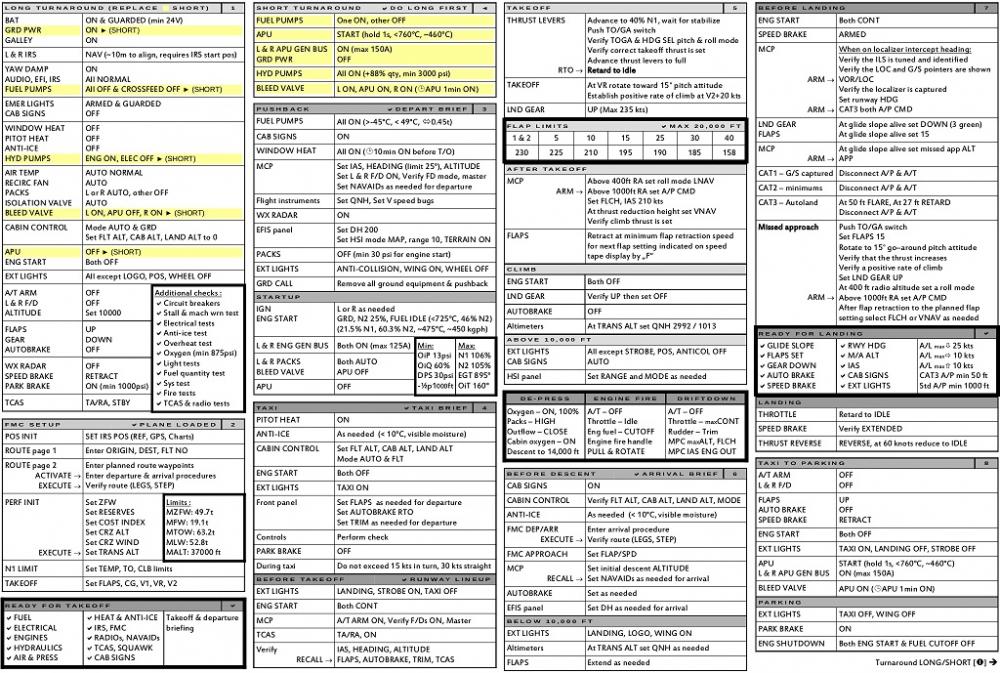

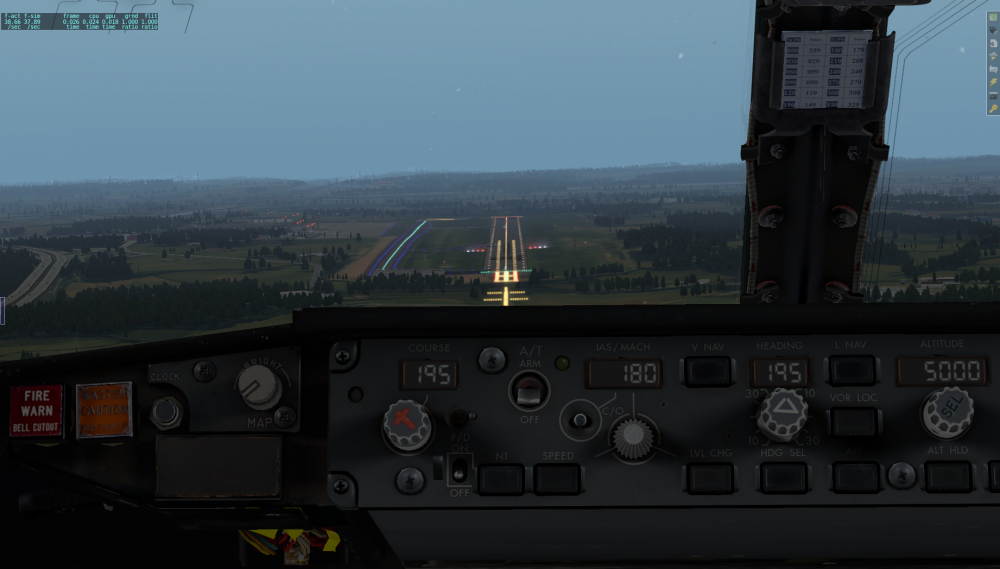


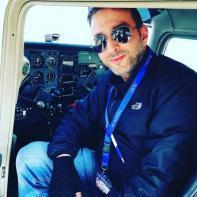
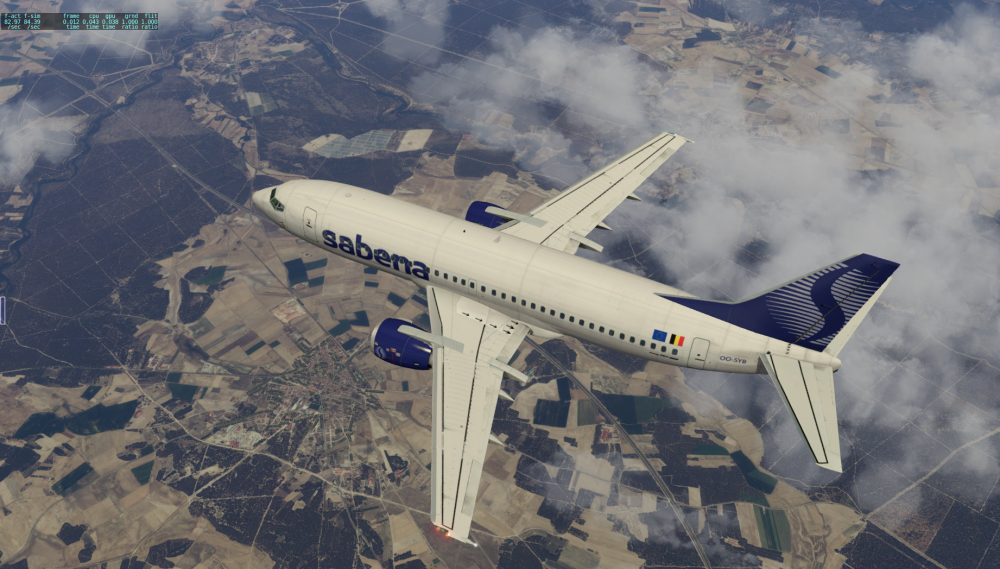
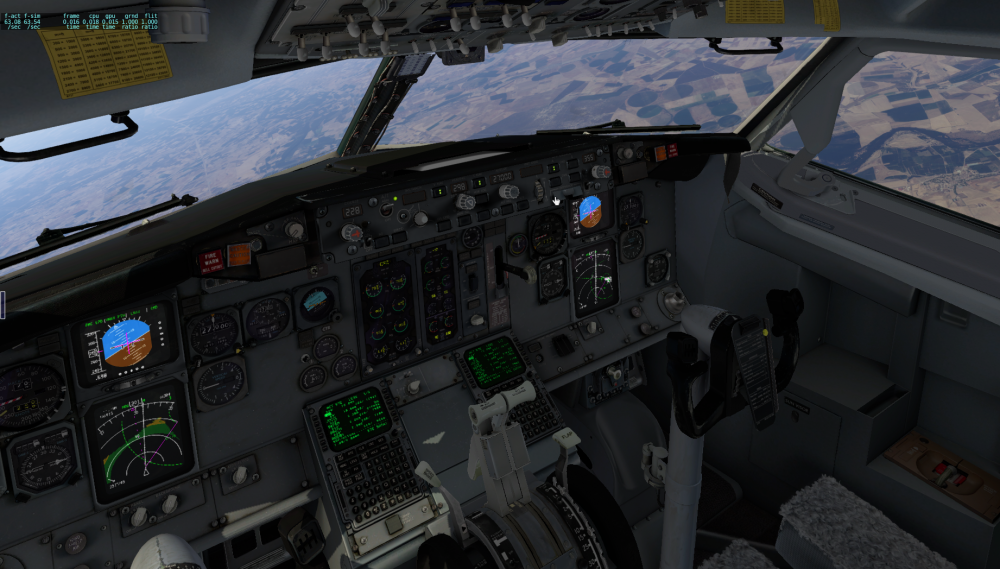


_2.thumb.png.da999833ca5dde610bd3db5f6db01e2f.png)
